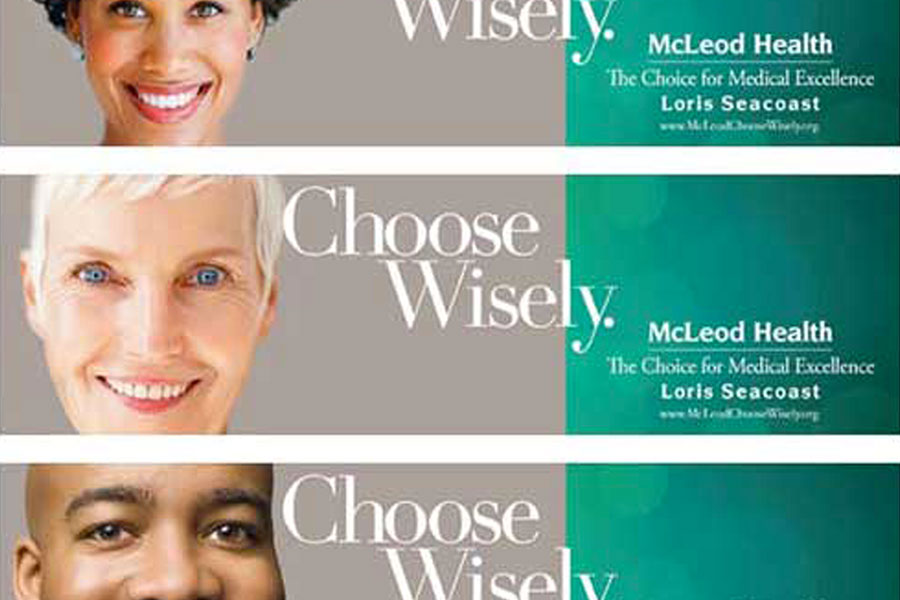LHWH is honored to be a part of a new educational resource
[one_third] [/one_third]Over the summer, we received a note from Oxford University Press Department, in the UK, asking if they could include some of the creative work developed for our long-standing client, McLeod Health, in a new marketing textbook.
The LHWH team has always valued learning and the importance of incorporating new ideas into our everyday routines in the office. After reading more about the textbook’s topics, we were not only intrigued and excited but we felt like we were right back in the classroom!
Aspects of the McLeod Health Choose Wisely campaign supports interesting content on why consumers choose different brands when they are making a purchase. The chapter explains two types of consumer purchase decision making: low involvement and high involvement.
Low involvement purchasing:
Includes situations where a consumer already has a go-to brand that they always buy. Low involvement decisions also occur when a consumer chooses a brand based on a one-time promotion, cool packaging that catches their eye, or if it’s the only brand at the corner store and it is easy to grab and go.
High involvement purchasing:
Includes situations where a consumer spends more time making their brand choice. The consumer may spend time searching for different options online or in-store. They also tend to refer to reviews, referrals and recommendations from other consumers before picking a brand.
Why Choose Wisely?
Creative advertisements from McLeod Health’s Choose Wisely campaign were selected as real-world examples of high involvement purchasing. Choosing a healthcare provider is one of, if not, the most important consumer decision to be made. Looking for a reputable healthcare organization requires much more time spent considering options and doing research than on a low involvement decision.
The name of the campaign itself, “Choose Wisely,” taps into the feelings that a consumer has about making a healthcare decision. As a marketing campaign example we hope that it help students get a better understanding of the thought that goes into a brand campaign and importance of thinking about the consumer’s priorities.
Click here, to read more about McLeod Health, and here for the print work developed.








